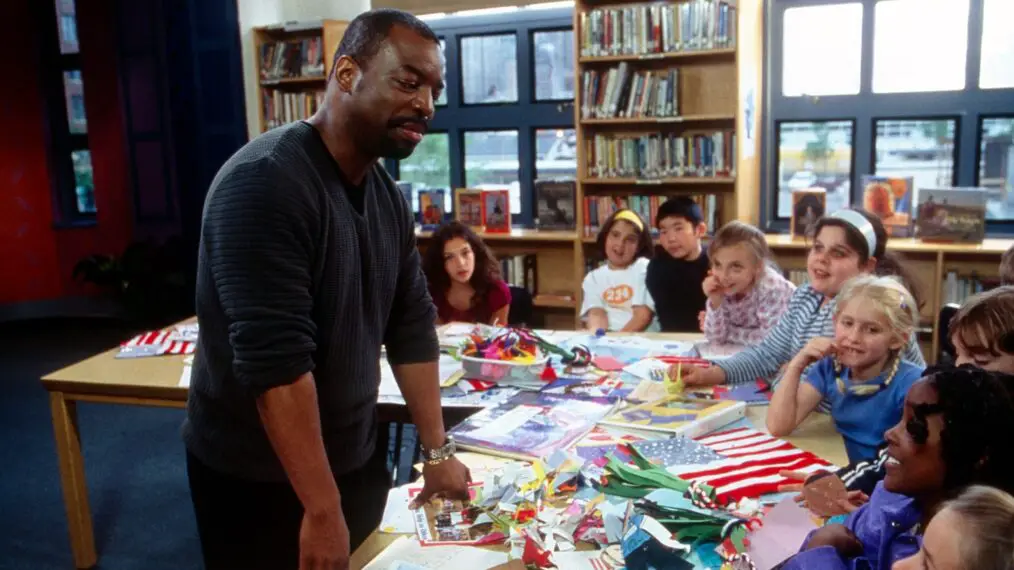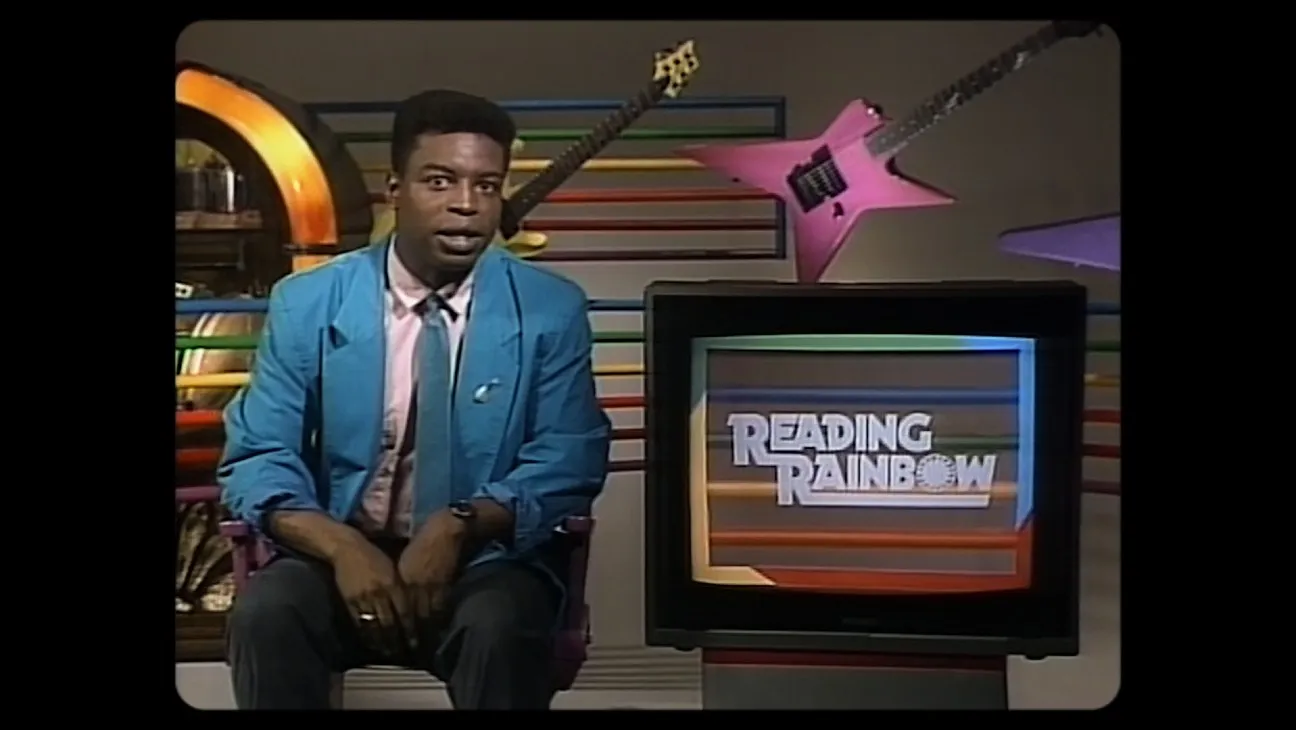Documentaries about old kids’ shows can easily be written off as nostalgia for a pre-digital childhood. But, Butterfly in the Sky, a documentary about Reading Rainbow reminds us of a time when the Corporation of Public Broadcasting had a revolutionary idea: What if TV loved people instead of trying to sell to them?
Or in the case of Reading Rainbow, loved kids instead of shoving them in front of commercials designed as stories. Bradford Thomason and Brett Whitcomb’s documentary doesn’t deviate from the talking heads style format of so many docs. In truth, it serves to remind boomers and millennials of a time when not everything made for kids was sold to them.

To be fair, “Sesame Street” had toys, and made a fortune off them, but “Sesame Street” itself didn’t exist merely to sell toys, nor were characters introduced to beef up the existing toy line. Likewise Reading Rainbow did work with publishers to push books-but never in a sense that it was crass.
For those too young to know what I’m referring to, Reading Rainbow was a show on PBS that encouraged kids to read. A show that feels as vital now as it did back when it first aired back in the 80s. As PTAs around the country ban more and more books that dare readers to look at the world through another person’s eyes, a show dedicated to getting kids to read is an idea we should perhaps return to.
Hosted by Levar Burton, fresh off his star-making turn as Kunte Kinte in the historic miniseries “Roots”, the adaptation of Alex Haley’s book about slavery from the Black perspective, Reading Rainbow was a spiritual extension of “Mister Rogers Neighborhood” in the sense that Burton was more than just a host but a figure that radiated love and care towards his audience.
Jason Reynolds, a Black young-adult author interviewed, talks about the importance of Burton and his Blackness in Reading Rainbow. His presence and demeanor made them feel loved and cared for at a time when Black figures were aspirational, Burton was inspirational. A stark contrast to the rest of the media landscape of the time.
The cultural diversity of Reading Rainbow is a part of its legacy. One episode even had RUN DMC on to rap about reading and showing rap music’s literary and poetic aspects. The crux of all this is the way the show was dedicated to intellectually and culturally broadening horizons.
As conceived by creators Twila Liggett and Tony Buttino, Reading Rainbow was about talking TO kids and not AT them. Under them, the show talked with kids about issues ranging from showing a birth to sitting down with kids who went to public school a block away from Ground Zero. It is impossible to watch Butterfly in the Sky and not feel oneself tear up. If for no other reason than because the modern landscape is such a greedy craven landscape, that people like this wanted to take Children’s television seems like a fairy tale from some long ago time.
Burton himself talks at length during Butterfly in the Sky. He reveals that he spent his youth wanting to be a priest before becoming an actor. Something that made the notion of “being of service” a very natural concept to him. A recurring theme of the interviews is how people wanted to do this because, yes it’s a job, but talking to kids is such a vital aspect of development.
For all the hollering about protecting kids from transness and all the handwringing about what they might witness in a book from conservatives, there’s a very real fear of the world around them. Instead of preparing kids for the world, discussing ideas, and having faith in a child, we have retreated into if not book burnings then a philosophy that feels adjacent to that very ideal. These people don’t care about kids because if they did they would talk to them instead of yelling at everyone else.
The by-the-numbers aspect of Thomason and Whitcomb’s Butterfly in the Sky can easily be forgiven simply for the amount of behind-the-scenes footage and stories that are divulged about the show. Heck, the scene where Stephen Horelick, the composer for the Reading Rainbow theme, shows on the synthesizer, how he came up with the notes and sounds, reader, it was transportive.
I grew up with Reading Rainbow and had somehow forgotten one of the most popular segments was the segments where real kids reviewed real kids’ books.
Producers would read a book to a child and then get their honest opinion about it and then film their review. The reviews were written by the kids themselves. These segments gave them a voice, and an opinion, and helped them discover their likes and dislikes. Many of these kids grew up to pursue careers in the entertainment industry, but hold those early moments as not only formative but with great awe that someone would let a child speak so honestly about a book.
Imagine, at an early age, instilling the power of criticism and the courage to express your opinion about a work. It was and is exhilarating to watch through a modern lens.
Butterfly in the Sky also looks at the celebrities who guest starred to read the books. Of course, Peter Falk was on there; because who else would you get to read “The Robbery at Diamond Dog Diner”? The story about James Earl Jones wanting to delay the recording because he wanted to work on getting his voice right shows that the show inspired more than just kids.
Watching Butterfly in the Sky I found myself thinking of books I read as a child, because of this show. Young Sherman was a frequent visitor to the public library. I would often check out stacks of books, devouring them, as they showed me time after time the vastness of the world and the seemingly limitless capacity for imagination. It was through books that I discovered old monster movies, and it was through TV I discovered classic cinema, the two combined, to help my very early desire to learn about movies.

Burton is doubtless familiar to many readers as Gerodi LaForge from Star Trek: The Next Generation. A role he took while doing Reading Rainbow. A show that made possible one of the most memorable episodes of the show’s history: the behind-the-scenes tour of Star Trek. One of the things we’ve lost in the digital age are all the shows that would take us behind the scenes, pull back the curtain of all the magic, showing us the viewers not only how the magic happens but all the people behind the scenes that we typically don’t see.
Not since the episode of Muppets Tonight when they pulled the camera back and we saw the actual puppeteers has an episode of television rocked a child’s world as hard as the Star Trek episode of Reading Rainbow. It’s an element of the modern digital age that we’ve lost.
Behind-the-scenes features on DVD, commentaries, shows dedicated to tours of sitcom sets, all of these shows were more than just ephemeral content. They strived to highlight the very real work that went into creating shows and movies. Perhaps the lack of these little vignettes is why so many tech bros are convinced that AI can so easily replicate creative work.
Television during the 70s and 80s was akin to what the internet and social media are today. A societal scapegoat as well as a source of great power that few understood how to wield. Part of what Public Broadcasting attempted to do was take it upon itself to understand that responsibility and try to wield it with care and attention.
The impact of Reading Rainbow is immeasurable. From having RUN DMC on to rap about books to on-location documentary-style footage of the wrap-around segments, to the way Levar would look directly down the camera lens and into our homes, the show feels as fresh now as it did when it aired. If anything it highlights how little the modern entertainment cultures likes kids, or, for that matter, adults.
Images courtesy of AMC Theaters and Fifth Season
Have strong thoughts about this piece you need to share? Or maybe there’s something else on your mind you’re wanting to talk about with fellow Fandomentals? Head on over to our Community server to join in the conversation!

